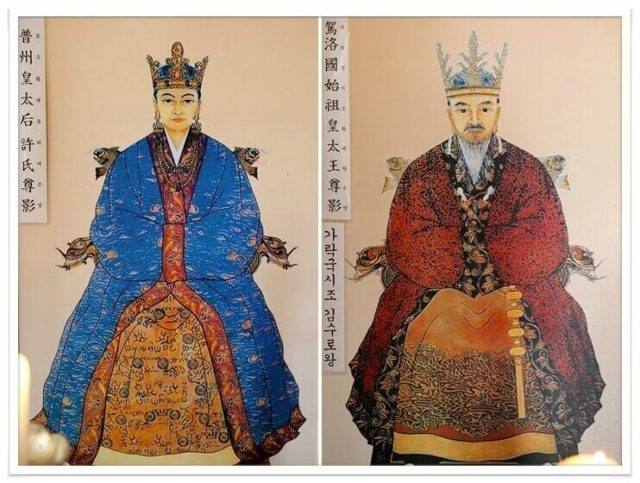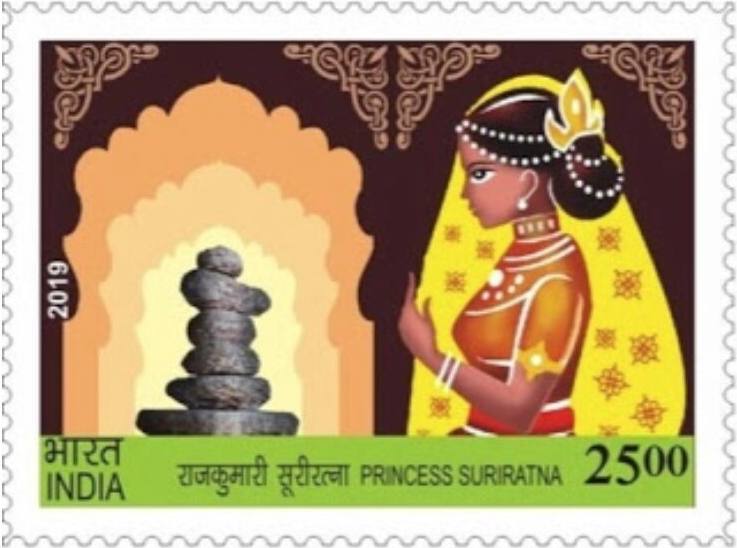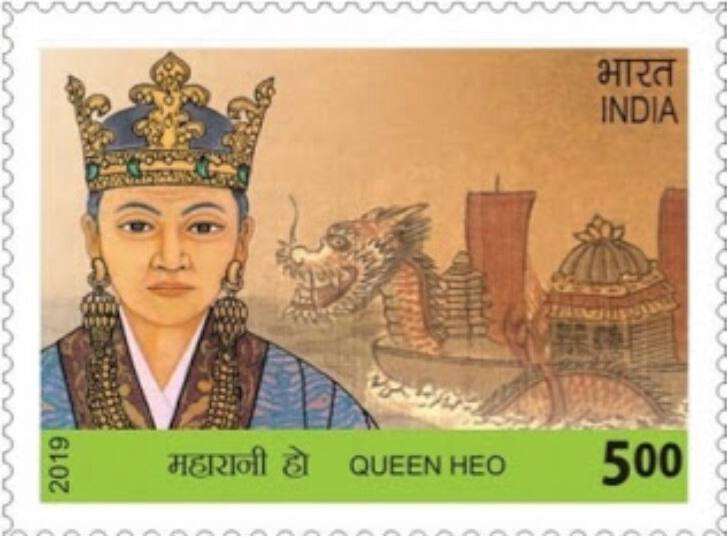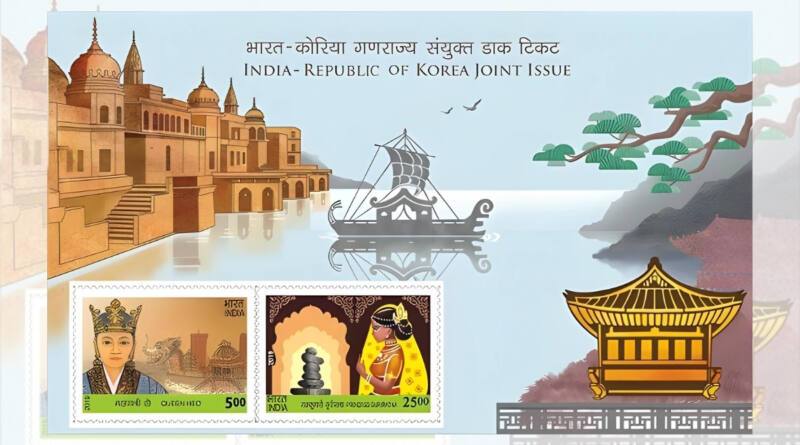Know The Truth About The Indian-Korean Queen
While most people remember Ayodhya as the site of Lord Ram’s birth, the city has a deeper meaning for a small but vocal group of South Koreans who feel a connection to the land.

Multiple historical Korean tales support this notion by mentioning the narrative of Suriratna, an Indian princess who married a Korean monarch and began a dynasty.
The story goes that Princess Suriratna, whose real name is Heo Hwang-ok, travelled to Korea in the year 48 AD, which is almost 2000 years ago, and married a Korean king to establish the Karak dynasty.
The king of Ayodhya supposedly received a divine command to marry King Kim Suro of Korea when his daughter was sixteen years old, according to certain Chinese-language sources. After getting married, Princess Suriratna changed her name to Queen Heo Hwang-ok.
Queen Hwang-ok was a princess of the “Ayuta” kingdom, according to Samguk Yusa, a well-liked South Korean book that includes historical tales and fables. The royal couple supposedly had a prosperous life. Each of their ten sons lived to be more than 150 years old.
Historians disagree as to whether this “Ayuta” is a reference to the contemporary Indian state of Uttar Pradesh’s Ayodhya or possibly another ancient city in Tamil Nadu.
However, there isn’t any conclusive proof that the princess ever existed. There has been more than one fictional adaptation of the story because there is so much space for invention, but experts do not consider the tale of her genesis to be historical.
We should investigate more factually.
How it all began…
Although the Samguk Yusa bears mention of it, the lost Garakguk-gi (Record of the Garak Kingdom) contains the legend of Heo. Legend has it that Heo belonged to the “Ayuta Kingdom” as a princess. The existing records only refer to Ayuta as a distant country. Although the mythology of Ayuta is commonly associated with India in literature and popular culture, no written traces of the tale exist in India proper. Based on phonetic resemblance, professor and anthropologist Byung-mo Kim of Hanyang University connected Ayuta to Ayodhya in India. “It is interesting to note that the city of Aythia was at one time the capital of the Kingdom of Thailand,” Grafton K. Mintz and Tae-hung Ha remarked, “because of phonetic similarities.” They went on to say that the fact that Ayuta was the Ayutthaya Kingdom of Thailand was also noteworthy. The fact that they translated it as “I am Princess of Ayuta (in India),” however, suggests that they were still supporting an Indian origin.
However, George Coedès asserts that the Ayutthaya state’s foundation did not occur until 1350, a full decade after the publication of Samguk Yusa. Although some historians suggest that she may have originated in southern India, there is still no clear consensus on whether the Ayuta Kingdom is a corruption of the Ay Kingdom or a vassal of the Pandyan Empire in ancient Tamilakam. Nobody knows where Queen Heo came from, despite all the speculation.
Despite popular belief in India, the Samguk Yusa does not contain the traditional Indian royal name “Suriratna.” Instead, Prasannan Parthasarathi, an Indian author, borrowed it from his comic book “Sri Ratna Kim Suro: The Legend of an Indian Princess in Korea” (2015). The author arrived at the name “Suriratna”—”Yellow Jade” in Hanja—through an educated guess, and the name “Hwang-ok” connotes yellow jade. There is no historical evidence to support this idea, as the name “Suriratna” does not imply a South Indian origin associated with Tamil. Despite its modern origins and absence from Samguk Yusa, it became popular in Korea and India thanks to a number of news pieces; therefore, the legitimacy of the name is irrelevant.
Marrying Suro
She introduced herself as “Hwang-ok” (meaning “Yellow Jade” in Hanja), and her family name was “Heo” (meaning “珈” or “Hurh” in Hanja). Heo revealed to King Suro that her age was sixteen.

Her account of her journey to Gaya is as follows: She explained that her parents’ dreams had seen the Heavenly Lord, or Sange Je, which is how she ended up in Gaya. He ordered them to send Heo to Suro, the newly anointed king of Gaya. The monarch had not yet discovered a queen, according to the dream. Then Heo’s father instructed her to travel to Suro. She eventually found Beondo, a peach that only ripened once every 3,000 years, after two months at sea.
Legend has it that King Suro’s courtiers begged him to choose a bride from among the young women they planned to bring to the palace. Nevertheless, Suro has declared that the heavens will dictate his choice of a spouse. He gave Yuch’ŏn-gan the order to board a boat and a horse to the island of Mangsan-do, which is located south of the city. Upon arriving at Mangsan, Yuch’ŏn beheld a ship flying a crimson flag and a red sail. His mission was to accompany the ship as it made its way to the coast of Kaya (or Gaya, modern-day Gimhae). When the ship arrived, another officer named Sin’gwigan hurried to the royal palace to tell the king. As a guard of honour, the monarch had nine clan chiefs accompany the ship’s passengers to the palace.
Princess Heo made it clear that she would not be going with the outsiders. As a result, the monarch had a tent set up on the hillsides close to the royal residence. At that point, the princess and her attendants—courtiers and slaves—arrived at the tent. Sin Po (or Sin Bo, 申輔) and Cho Kuang (or Jo Gwang, 硰광, 莙匡) were among the courtiers. Mojong (窨栕, 慕貞) and Moryang (모럋, 慕良) were the names of their respective wives. Twenty slaves hauled gemstones, silk brocade, silverware, diamonds, and gold. A separate passage of Samguk Yusa describes the princess’s silk pants as a skirt; before she married the king, she removed them and offered them to the mountain spirit. King Suro reminds her that he, too, received advance notice of Heo’s impending arrival, and explains that he did not marry the women his courtiers proposed to him.
King Suro generously distributed thirty rolls of hempen fabric (each roll measuring forty yards) to the escorts who chose to return home with the Queen. For the return journey, he also distributed ten bags of rice to each individual. Two courtiers and their wives were among those who remained behind with the queen in her initial convoy. The queen received a dwelling within the inner palace, while the two courtiers and their wives received separate residences. The rest of her caravan received twenty rooms.
Her Descendants
The Dynasty Of Karak
Kim, a popular Korean surname, is believed to have originated with King Kim Suro in Gimhae.
According to legend, the legendary queen’s twelve offspring with King Suro account for more than six million modern-day Koreans, or nearly 10% of South Korea’s population. This number is disproportionately high among the Gimhae Kim, Gimhae Heo, and Incheon Yi clans.
The queen is rumoured to have been disappointed that her children could not carry on her surname, even though it is customary for Korean children to take on their father’s last name.
According to folklore, King Suro gave two of their sons permission to adopt her name, Heo, which is still in use today.
Legendary genealogy sources trace the Gimhae Heo back to these two princes. The Yi clan of Incheon and the Gimhae Kims both trace their origins to the other eight sons. The other two offspring were daughters, who were married to a Talhae son and a Silla nobleman, respectively.
The other sons, as recounted in the Jilburam, supposedly followed their maternal uncle Po-ok’s lead and became devout Buddhists. Hyejin, Gakcho, Jigam, Deonggyeon, Dumu, Jeongheong, and Gyejang were their names.
The former South Korean president Lee Myung-bak’s wife, Kim Yoon-ok, is a member of the royal Kim dynasty and has claimed royal lineage. The Kims, who served as prime minister and president of South Korea, respectively, trace their lineage back to the Karak dynasty.
Members of the Karak dynasty have also preserved the stones that the princess supposedly used to steady her ship on the way to Korea.
The Kims of Korea
The majority of Koreans with the surname “Kim” are members of the Gim clan from Gimhae, and they are the most common surname in Korea. Each one of them is a direct descendant of Geumgwan Gaya’s King Suro and Queen Heo Hwang-ok.
Around 500 years after the founding of the Confederacy of Gaya, King Beopheung, the 56th and last ruler of Silla, assumed control of the Gaya dynasty. King Guhyeong, who was a direct descendant of King Gim Soro and Queen Heo Hwang-ok, surrendered to King Beopheung, combining his lineage with that of the Jeonju Kim Clan. This technically made him a descendant of Princess Suriratna of India.
How famous is this story in South Korea?
Even though many claim to have heard of this mythology, few really believe it; still, due to its long history, it continues to generate much discussion. On the other hand, many people find it fascinating to learn that their family tree includes a distant relative.
Some have even suggested that the princess might be Thai, given that the name Ayuta might allude to the Ayutthaya Kingdom in Thailand.
Though it is said that she hailed from a “southern country over an ocean,” there are many who think that the tale was greatly exaggerated when Buddhism came to Korea.

How has this story affected contemporary relationships?
In 2000, a deal was made to establish Ayodhya and Gimhae as sister cities.
In 2001, over 100 historians and government officials, including the North Korean ambassador to India, unveiled Queen Hwang-ok’s memorial in Ayodhya on the west bank of the River Saryu.
A group from Korea forwarded a proposal to enhance the memorial to the Uttar Pradesh government in 2016.
On November 6, 2018, the eve of the Diwali celebration, South Korea’s First Lady Kim Jung-sook laid the foundation stone for the existing memorial’s extension and beautification. Along with Chief Minister Yogi Adityanath, she paid tribute at the Queen Heo Memorial, attended a ceremony for the memorial’s renovation and beautification, and took part in an extravagant Diwali celebration in Ayodhya that featured cultural performances and the lighting of more than 300,000 lights along the Sarayu River’s banks.
Those claiming descent from the queen visit Ayodhya annually to honour the princess in her native land.
The life of Queen Hwang-ok has served as, and continues to serve as, the “foundation for building better relations” between India and South Korea.
Kim Jong-un, the dictator of North Korea, is among the most well-known Person of Indian Origin (PIO) in the world.
In the southern Korean peninsula, there existed a strong confederacy known as Geumgwan Gaya, or simply Gaya, roughly between the years 1 and 500 AD.
It was once believed that Korean Gaya was named after Bodh Gaya, the sacred location in present-day Bihar, India, where Gautama Buddha is credited with achieving enlightenment. Gaya was established by the great king Gim Soro, who later wed Princess Suriratna of “Ayuta,” India, in the year 48 CE.

Debate Centred On Her Existence
Indian Records
Despite her ties to both nations, there are no historical texts or official records in India that mention an Indian princess visiting Korea during the period from Ayuta, the place that is thought to be her birthplace. In the end, this means that everything about her depends only on the stories told in Korea.
Nevertheless, rather than confirming Heo Hwang-ok’s historical existence, a lot of Indian historians focus on her legacy and how it connects India to Korea today.
Korean Records
The unconventional background of Heo Hwang-ok had generated a great deal of debate among historians in South Korea. Even though Queen Heo is a legendary figure, many historians doubt her existence and have disproved her travel routes multiple times in the past.
Genetic Verification
The Verification Through Genetics
A Korean study team analysed the remains of King Suro and Queen Heo’s alleged descendants using genetics in 2004. The study discovered Haplogroup M, a haplogroup that is primarily present in individuals from southern Asia. According to the researchers, the same haplogroup, known as the Haplogroup M7 family, which is inherited through maternal lineages found in the Middle East, South Asia, and East Asia, was allegedly present in the tomb remnants. They emphasised that, in contrast to the remains discovered in the tombs, which had a far higher frequency of this DNA, modern Koreans as a whole only had, at most, around 5% of this DNA. This finding supported the idea that the descendants could trace their origins to a foreign lineage, including that of India, which is consistent with the narrative found in Samguk Yusa.
They were cautious in asserting that the remains were unquestionably of Indian provenance, noting that the haplogroup demography was too broad to pinpoint a precise origin. They claimed that more investigation would be required in the future in order to create a convincing case.
Dr. Seo Jeong-sun of Seoul National University and Kim Jong-il of Hallym University made the first move in this direction by performing in-depth genetic analyses on the remains of Queen Heo Hwang-ok, née Princess Suriratna, in South Korea. Their findings proved that the monarch was, in fact, of what is commonly referred to as Indian ancestry.
Given the phonetic similarity of the two names, anthropologist Kim Byung-mo Ayuta seemed to validate the commonly held theory that Ayuta was truly Ayodhya.
Whether she has Indian origins or not, she is instrumental in connecting two distant worlds for harmony, diplomacy, and peace, even after centuries of her passing. This is a commendable achievement.





An impressive share, I simply given this onto a colleague who was doing just a little analysis on this. And he in truth purchased me breakfast as a result of I discovered it for him.. smile. So let me reword that: Thnx for the treat! But yeah Thnkx for spending the time to debate this, I really feel strongly about it and love reading extra on this topic. If doable, as you grow to be expertise, would you thoughts updating your blog with more details? It’s extremely useful for me. Massive thumb up for this weblog publish!